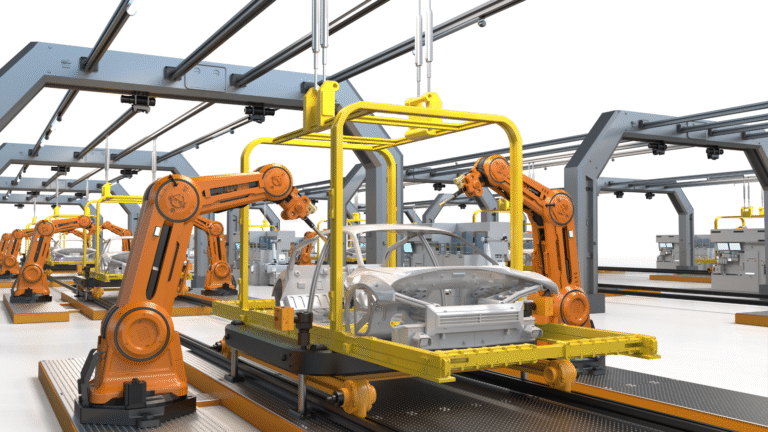Electric vehicle (EV) manufacturing in Australia is rapidly evolving, driven by global demand for sustainable transport and increasing domestic interest in clean energy solutions. With a growing market and a unique position in the Asia-Pacific region, Australia has the potential to become a key player in the EV industry. This article explores the current state of electric vehicle manufacturing in Australia and examines future prospects for this dynamic sector.
Table of Contents
- Current State of EV Manufacturing in Australia
- Key Players in the Market
- Government Policies and Incentives
- Challenges Facing Local Manufacturing
- Future Prospects and Opportunities
- Emerging Technologies and Trends
- Investment and Infrastructure Developments
- Australia’s Role in the Global EV Supply Chain
- Case Studies: Australian EV Initiatives
- Tesla’s Footprint
- Local Startups and Innovators
- FAQs
- Conclusion
- Meta Description
Current State of EV Manufacturing in Australia
Key Players in the Market
Australia’s EV market is still in its early stages, but several companies and initiatives are making significant contributions:
- SEA Electric – An Australian company specializing in EV power-system integration for commercial vehicles.
- ACE EV Group – Focuses on lightweight, urban EVs designed and assembled in Australia.
- Tesla – While Tesla does not manufacture in Australia, it has a strong presence in sales, service, and charging infrastructure.
Government Policies and Incentives
Federal and state governments have implemented various policies to support EV adoption and manufacturing:
- Federal Government: Offers grants under the Future Fuels Fund to support charging infrastructure.
- State Incentives:
- Victoria: $3,000 rebate on new EV purchases and investment in EV infrastructure.
- New South Wales: Stamp duty exemptions and rebates up to $3,000.
- Queensland: EV tax cuts and charging network expansion.
Challenges Facing Local Manufacturing
Despite the momentum, several challenges remain:
- Lack of Scale: Domestic manufacturing struggles with economies of scale compared to global giants.
- Supply Chain Gaps: Limited local production of EV components such as batteries and semiconductors.
- Skilled Workforce: Shortage of professionals with EV-specific engineering and manufacturing expertise.
Future Prospects and Opportunities
Emerging Technologies and Trends
Technological innovation is key to Australia’s EV future:
- Solid-State Batteries: Research institutions like CSIRO are exploring next-gen battery technologies.
- Vehicle-to-Grid (V2G): Increasing interest in EVs that can feed electricity back into the grid.
- Autonomous EVs: Projects like those at the Australian Centre for Robotic Vision are developing self-driving capabilities.
Investment and Infrastructure Developments
Significant investments are being made to support the EV ecosystem:
- Charging Networks: Companies like Evie Networks and Chargefox are expanding fast-charging stations nationwide.
- Battery Manufacturing: Projects in WA and SA aim to create local lithium battery production hubs.
- Research & Development: Partnerships between universities and the private sector to boost innovation.
Australia’s Role in the Global EV Supply Chain
Australia possesses abundant natural resources crucial for EVs:
- Lithium, Nickel, Cobalt: Key materials for EV batteries, with Australia being a top global producer.
- Export Potential: Opportunities to become a major supplier to international EV manufacturers.
Case Studies: Australian EV Initiatives
Tesla’s Footprint
While Tesla’s vehicles are manufactured overseas, the company is heavily invested in:
- Supercharger Network: Over 50 locations across major Australian highways.
- Energy Storage Projects: Collaboration on large-scale battery storage in South Australia.
Local Startups and Innovators
- ACE EV Group: Producing electric vans and cars for urban environments.
- ROEV: Converts traditional vehicles to EVs using retrofit kits.
- Jolt Charge: Offers free fast charging supported by advertising partnerships.
FAQs
Q1: Does Australia manufacture electric vehicles? Yes, Australia has a growing local EV manufacturing sector, with companies like SEA Electric and ACE EV leading the charge.
Q2: What are the government incentives for EVs in Australia? Incentives vary by state and include rebates, tax exemptions, and charging infrastructure support.
Q3: Why is EV manufacturing limited in Australia? Challenges include high production costs, limited component supply chains, and a relatively small domestic market.
Q4: Is battery manufacturing viable in Australia? Yes, due to Australia’s rich mineral reserves, several battery manufacturing projects are underway.
Q5: What is the future of EVs in Australia? The future is promising, with growing investment, technological innovation, and expanding infrastructure.
Conclusion
Electric vehicle manufacturing in Australia is at a pivotal stage. While current production capabilities are limited, the combination of natural resources, technological innovation, and supportive government policies position Australia for a strong future in the global EV landscape. As the market matures, opportunities for local manufacturing, exports, and sustainable transportation will continue to grow.
Ready to dive into the world of EVs? Explore your options, support local innovators, and be part of Australia’s electric future.
Meta Description
Explore the current state and future of electric vehicle manufacturing in Australia. Discover key players, challenges, and growth opportunities in the Aussie EV market.
